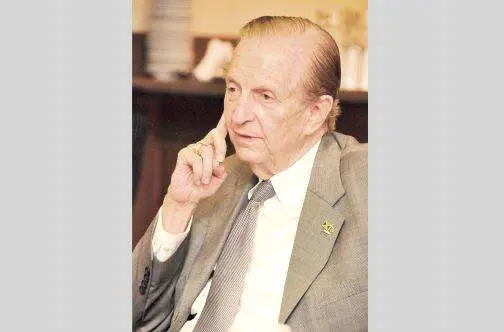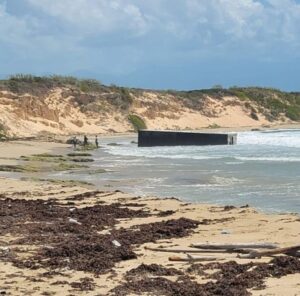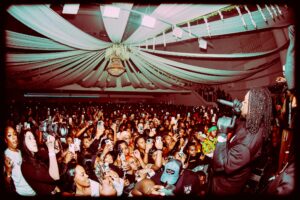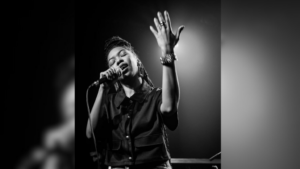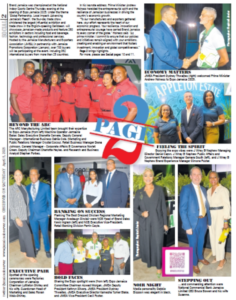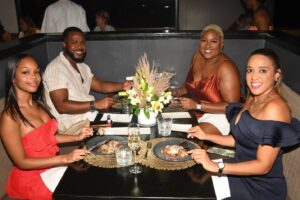
Too many Jamaicas
On April 21, 1961, Edward Seaga, then Opposition member of the pre-independence Legislative Council, gave an address in the State of the Nation debate that rocked the House and shook up the nation. It was a speech which focused heavily on the depressed conditions under which the majority of Jamaicans were living vs the comfort zones of the middle- and upper-class well-to-doers.
The presentation received maximum publicity and became known as the ‘Haves and the have-nots speech’, highlighting the huge gap between seven per cent of the population — the haves — and 93 per cent of the population — the have-nots.
Seaga later said that the speech was a by-product of his years spent living in the poor conditions of a rural village and an inner-city depressed area. “Coming from a background of somewhat relative comfort, the everyday question that confronted me was how was living possible on so little. The question turned to outrage when it was recognised that the expenditure of one middle-class family would cover the requirements of several families living in the poor circumstances which I experienced daily.”
As an aside, it must be reminded that no other politician in Jamaica has ever given up his or her comfort level to live for a while in a represented constituency to experience the true economic conditions facing the poor that they claim to champion.
In his autobiography Seaga recalls how members of the Legislative Council, including representatives of the wealthiest families and biggest business houses in Jamaica, were visibly shaken. “The charge laid on Government” (and remember this was in 1961), “that its policies were enriching the rich at the expense of the poor was politically devastating.”
It occurred to me that a similar speech made today, copying Seaga’s painstaking data research methods, would reveal not two, not three, but several different Jamaicas showing up in varying situations and in different scenarios as we go about our normal day-to-day businesses.
This came home to me while in rush-hour traffic one evening on Trafalgar Road. One Jamaica sat comfortably in air-conditioned cars, patiently waiting for the lights to change, and on their way to a comfortable pre-dinner cocktail drink, perhaps at a hotel, a swanky lounge, or in some well-stocked house bar overlooking the St Andrew plains.
Another Jamaica pounded the pavement outside as vendors going up to car windows trying to sell their wares — peanuts, ripe bananas, cold drinks, doughnuts — before the traffic ‘dun’. Mendicants also, one in a wheelchair who always catches my attention, others faking hurt with oversized bandages meant to attract sympathy and a donation. Two different Jamaicas on Trafalgar and Waterloo every evening.
Later that night there was a newscast of a seminar held earlier in the day at a leading hotel, with prime-time personages smiling into the cameras, wine glasses being refilled, guest speaker oozing charm, and audience at ease knowing they had nothing to do but listen and be grateful for the few hours away from work. The speaker was, of course, prognosticating on the state of the economy with great words of wisdom on how to heal the nation, and taking the requisite political shot at the Economic Growth Council.
At the same time, downtown on the Orange Street sidewalks, large-bottomed vendors were discussing the peaka-peow, the lottery windfall, the sales of the day, and timing themselves to escape the police dragnets, while budgeting for how and which of the children would be able to attend school tomorrow depending on whose turn it was to wear the one pair of school shoes shared by the family. Two different Jamaicas.
There is another group of uptowners who spend their workdays at seminars in the morning, company lunches at another hotel in the afternoon, and returning to the morning hotel for a banquet paid for by sponsors of an overpriced charity event where you buy an expensive gown, eat a $12,000 dinner, and feel good that out of this extravagant largesse a basic school will reap the rewards of your good deed for the day. That’s the uptown Jamaica.
There is a lot of, “Fancy meeting you here,” or “Didn’t I see you this morning somewhere,” or even “Oh, yes, at the Bronx for that fabulous speech on what you may call it, I can’t quite remember now.” There’s sure to be a, “Sorry, got to run to the ‘Nations Bank’ fund-raising concert,” and “My, me, you look good, even if it’s the same dress you were wearing this morning.”
There is another Jamaica. This is the upstairs and downstairs group that ceremoniously opens the hotel front door, wait at the tables, act as security guards, and drive the taxis or the private cars. They too have their serious discussions on the economy while they wait outside for their employers. But their take on the economy is far different; it has to do with the challenge to find bus fare and buy lunch, while the bosses inside solve the national economy in-between sips of red and white wine and a lobster thermidor.
Then there is the ugly Jamaica. The one that has divorced itself completely from the rest of us, who stalk the streets and lanes at night looking for blood, the murderers who have come out of hell’s gates. They seem not in control of themselves, but gripped by a satanic power that makes them hell-bent on shooting at random, impervious to counselling, and in a world of their own. It’s indeed the underworld, and they hark back to that evil power that seized Macbeth on his way to his own murderous assignment with a bloody dagger pointing the way to King Duncan’s chambers:
“Thou sure and firm set earth hear not my steps which way they walk for fear thy very stones prate of my whereabout.”
Thank God there is a beautiful Jamaica too. We see that in our teachers, our nurses, our students, our professionals. Jamaicans with ambition who have aspired to rise above harsh and unforgiving conditions to achieve here and abroad.
For Jamaicans like these, the excuses of poverty, barefoot, and back-a-wall days have long been eschewed, as the parental sacrifices and examples in an environment of traditional Jamaican ‘broughtupcy’ provided the firm foundation for these achievers.
I was privileged last week Thursday to sit in an audience where the Governor General Sir Patrick Allen brought the “I Believe” message in a powerful, eloquent and convincing way to an audience of students and civic leaders representing Middlesex County. One of the highlights was the Skyped presentation — direct from Italy, if you please — from a young Jamaican with an outstanding well-decorated USA fighter pilot record.
Lieutenant Diego McKnight left us longing for more as he quietly and elegantly addressed the matter beforehand — discipline, values, lifestyle, hard work, and aim-for-the-skies philosophy — delivering an inspirational message to the young people that enthralled the older ones as well.
I’m so proud of another young Jamaican leading the world, who still has his feet firmly planted in the Jamaican foundation of discipline, honesty, strong family values, and a humble and unassuming mannerism.
For a brief 45 minutes we enjoyed and learnt from his experiences in the US Air Force and all over the world. That was an example of the overseas Jamaica. When he was finished the other Jamaicas came to mind. The Trafalgar Road Jamaicas, the haves and the have-nots, the Jamaica of the churches, the Jamaica led by politicians who serve and dare to dream, the private sector Jamaica that seeks to share while others don’t, the idle Jamaica content to live off the endeavours of others, the evil Jamaica, the hard-working Jamaica, the rural Jamaica, the Jamaicans of all classes and make-up who provide the most elaborate, complex, at odds, visionary, proud, and dynamic national structure that makes us the most fascinating country in the world. Many Jamaicas.
But something is missing. Are there too many Jamaicans to make one Jamaica? Does our country have a purpose, an objective, a national ideal or a vision that can make us a nation.
Was the purpose of Eddie Seaga’s speech in 1961 to narrow the gap between the two Jamaicas and to make us one? Have we split further — after 55 years — into five, 50, or even 55 Jamaicas?
Former Education Minister Ronald Thwaites, in his
Gleaner commentary last week, suggests that we have come to a point where we need a compelling idea, a noble cause, to rekindle the national movement.
“In their times,” he went on to say, “causes like Emancipation, self-government, and Independence each excited enough of our ancestors to raise communal expectations and induce often heroic individual effort. Different classes, races, and interest groups came together and saw their self-interest achievable by joint action rather than self-referential behaviour.”
I sometimes consider what does it really mean to be a Jamaican? With so many Jamaicas popping up around us, do I choose to be one at the expense of the other? Does the hawker on Trafalgar Road think he is no less a Jamaican, or a very different Jamaican, than myself driving in an air-conditioned car?
Can we identify that elusive something, that compelling idea, that noble cause that will join up all the Jamaicas?
Certainly we unite when the right time comes: behind Usain Bolt, and respond with pride to the music of Bob Marley. And every October we take our national heroes out of the cabinet, dust them off, sing their praises, and hang them back carefully until next October. That’s not enough to rekindle.
Deacon Thwaites recommends that we put aside the fractures that divide us and develop the strong stomach for social re-engineering that alone can revive the national movement for inclusive transformation.
Dare I suggest that, perhaps, we could unite around education as a single national goal? That under the leadership of this former, and our present minister of education, we invite huge national participation in an unselfish quest to make Jamaica the best educated nation on Earth? We have other goals that must be achieved. But we simply won’t achieve any of them without a properly educated nation. We will never earn the respect of the world if our education levels remain where they are.
It’s a journey in which everyone can participate. The parent in the car and the parent selling on Trafalgar can share the same national goal. It’s a venture in which we can all help each other, encourage each other, reach across the divide, support, commend, and recognise each other.
When the handcart man can whisper in your car window as you drive past, “My daughter just passed ‘A’ Levels,” and you in turn can reply “Yes, my son also,” you both share in the noble cause, the compelling idea, the national movement. Set a goal that we can all unite around and make that goal to be the most educated nation on Earth.
Lance Neita is a public and community relations consultant and writer. Send comments to the Observer or lanceneita@hotmail.com.
